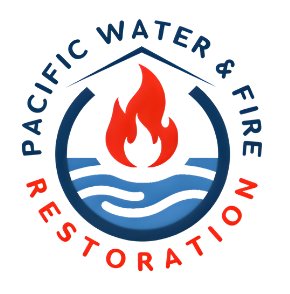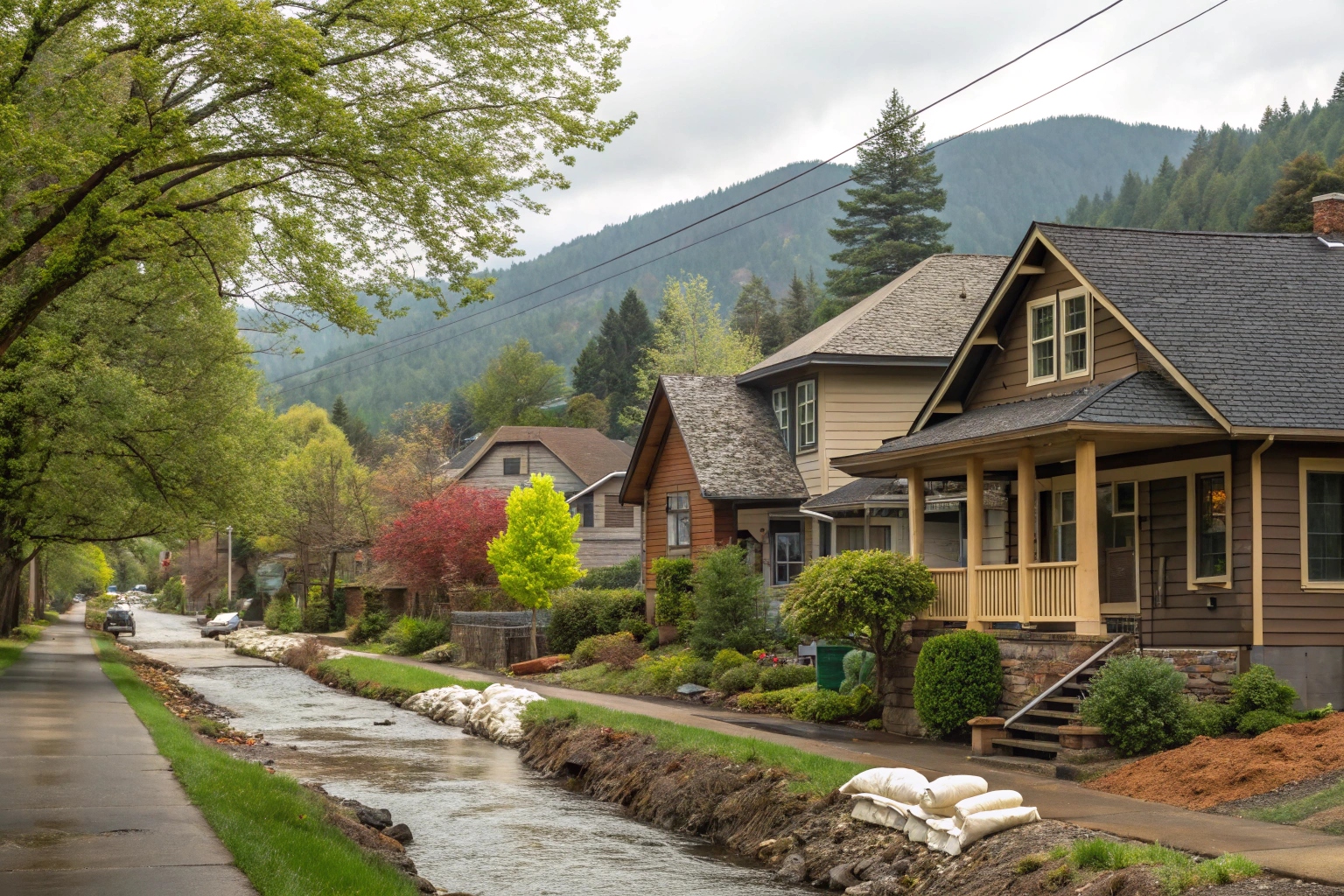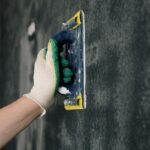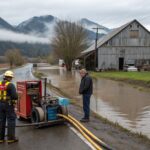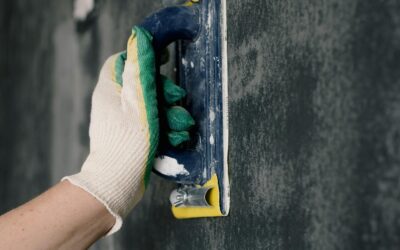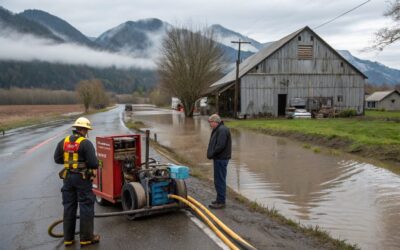Introduction: Silverton’s Unique Disaster Risk Profile
Nestled at the edge of the Willamette Valley and the foothills of the Cascade Mountains, Silverton, Oregon possesses undeniable charm and natural beauty. However, this picturesque location also creates a distinctive set of disaster risks that residents must be prepared to face. From the flooding potential of Silver Creek running through the heart of town to the increasing wildfire threats from surrounding forested areas, Silverton homeowners face multiple natural hazards that require thoughtful preparation.
At Pacific Water & Fire Restoration, we’ve worked with numerous Silverton homeowners to both prepare for potential disasters and restore properties after damage occurs. Through these experiences, we’ve gained valuable insights into the specific challenges Silverton properties face and the most effective strategies for protecting homes in this unique community.
This comprehensive guide will walk you through practical, proven approaches to safeguarding your Silverton home against the most common disaster threats while providing specific, actionable steps you can take today to significantly reduce your risk of serious damage.
Understanding Silverton’s Major Disaster Risks
Water-Related Threats: Silver Creek and Beyond
Silverton’s relationship with water is complex. While Silver Creek creates the town’s iconic waterfront and powers its historic industries, it also presents significant flooding risks:
- Flash Flooding Potential – Silver Creek can rise rapidly during heavy rainfall events, particularly in winter
- Urban Drainage Challenges – Older neighborhoods often have insufficient stormwater management systems
- Reservoir Proximity – The Silver Creek Dam and Silverton Reservoir upstream create additional considerations
- Historic Downtown Vulnerability – Many historic structures sit in lower elevations near the creek
- Seasonal Creek Tributaries – Smaller waterways that feed Silver Creek can overflow during heavy precipitation
According to Silverton’s Hazard Mitigation Plan, approximately 15% of Silverton properties face some level of flood risk, with the highest concentration in the historic downtown area and neighborhoods immediately adjacent to Silver Creek. The February 2019 flooding event demonstrated this vulnerability when heavy rainfall combined with snowmelt caused significant damage to several dozen properties.
Fire Risks: Urban and Wildland Concerns
While flooding may be Silverton’s most visible threat, fire risks present equally serious concerns:
- Wildland-Urban Interface – The eastern and southern edges of Silverton border forested areas with wildfire potential
- Historic Structure Vulnerability – Downtown’s concentration of older wooden structures creates urban fire spread risk
- Limited Evacuation Routes – Some neighborhoods have restricted access points in emergency situations
- Seasonal Drought Conditions – Increasingly dry summers create heightened fire danger periods
- Wind Corridor Effects – Silverton’s topography can channel winds that accelerate fire spread
The 2020 wildfire season brought these risks into sharp focus when the Beachie Creek and Lionshead fires approached within 10 miles of Silverton, prompting evacuation warnings for portions of the community. While Silverton was fortunately spared direct impact, the event highlighted the community’s potential vulnerability.
Additional Hazards: Storms, Ice, and Seismic Concerns
Beyond flooding and fire, Silverton faces several additional hazards worth considering in comprehensive home preparedness:
- Winter Ice Storms – Silverton’s elevation and proximity to the Cascade foothills makes it vulnerable to ice accumulation
- Wind Events – The topographical funnel effect can intensify regional wind storms
- Landslide Potential – Properties on hillsides, particularly on the eastern edge of town, face soil stability risks
- Earthquake Concerns – Like all of western Oregon, Silverton faces seismic risks from the Cascadia Subduction Zone
- Power Grid Vulnerability – Extended outages are common during winter storms
Each of these hazards creates specific challenges for Silverton homeowners, requiring thoughtful preparation strategies tailored to local conditions.
Essential Home Preparedness Strategies for Silverton Residents
Flood Preparation and Mitigation
For homes in flood-prone areas, particularly those near Silver Creek or in low-lying neighborhoods, several proven mitigation strategies can significantly reduce risk:
Property Assessment and Documentation
Begin by understanding your specific flood risk:
- Flood Zone Verification – Check FEMA flood maps to determine your property’s designated flood zone
- Previous Flooding History – Research if your property has experienced flooding in the past
- Water Entry Points – Identify vulnerable access points where water could enter your home
- Drainage Patterns – Observe how water flows around your property during heavy rainfall
- Recordkeeping – Document your home’s current condition with photos and videos
Pro Tip: Silverton’s Planning Department maintains detailed flood history records for many properties within city limits. Contact them at 503-874-2212 to inquire about your property’s specific history.
Physical Improvements for Flood Protection
Based on your assessment, implement appropriate protective measures:
- Foundation Waterproofing – Apply sealants and coatings to reduce water infiltration
- Drainage Improvements – Install French drains, swales, or improved gutters to direct water away
- Check Valve Installation – Prevent sewer backup with backflow prevention devices
- Sump Pump Systems – Add battery backup to ensure operation during power outages
- Critical System Elevation – Raise electrical panels, HVAC equipment, and appliances above potential flood levels
For Silverton homes in the highest risk areas, particularly those that have flooded previously, more substantial modifications may be warranted:
- First Floor Elevation – Raising living spaces above base flood elevation
- Flood Barriers – Deployable door and window barriers for temporary protection
- Flood-Resistant Materials – Using water-resistant flooring, insulation, and wallboard in vulnerable areas
- Dry Floodproofing – Professional sealing of foundation and walls to prevent water entry
- Wet Floodproofing – Modifying lower areas to allow water entry without significant damage
Safety Warning: Never attempt to seal your entire home against water pressure during flooding. Excessive water pressure against sealed walls can cause structural collapse. Professional assessment is essential for major flood mitigation projects.
Fire Protection and Prevention
Silverton’s dual fire risks—both wildland interface and urban structure fires—require comprehensive preparation strategies:
Defensible Space Creation
For homes near forested areas, particularly on Silverton’s eastern edge:
- Zone 1 (0-5 feet) – Maintain a non-combustible area immediately adjacent to your home
- Remove dead vegetation, leaves, and needles
- Use rock mulch rather than organic materials
- Keep this zone free of firewood, combustible furniture, and propane tanks
- Consider replacing vegetation with stone landscaping or fire-resistant plants
- Zone 2 (5-30 feet) – Create a buffer zone with reduced vegetation
- Space trees at least 10 feet apart
- Remove ladder fuels (low-hanging branches) up to 6 feet from the ground
- Keep grasses mowed to 4 inches or less
- Ensure proper spacing between shrubs and trees
- Zone 3 (30-100+ feet) – Manage outer areas to slow fire spread
- Thin tree canopies to prevent crown fires
- Create breaks in vegetation and tree lines
- Clean up fallen debris regularly
- Maintain access for emergency vehicles
Pro Tip: The Silverton Fire District offers free defensible space assessments for properties within their service area. These assessments provide property-specific recommendations and can sometimes qualify homeowners for insurance discounts. Call 503-873-5328 to schedule.
Home Hardening Against Fire
Regardless of your location in Silverton, these structural improvements can significantly increase your home’s fire resistance:
- Roof Upgrades – Install Class A fire-rated roofing materials
- Vent Protection – Cover vents with 1/8-inch metal mesh to prevent ember entry
- Gutter Guards – Install guards to prevent debris accumulation
- Fire-Resistant Siding – Consider fiber cement, stucco, or other fire-resistant exterior materials
- Multi-Pane Windows – Install tempered glass windows that resist breaking during fires
- Deck Protection – Enclose undersides of decks or replace with non-combustible alternatives
- Eave and Soffit Protection – Box in open eaves and use fire-resistant materials for soffits
For homes in Silverton’s historic districts, special considerations may apply when implementing fire-safety improvements. The Silverton Historical Society (503-873-7070) can provide guidance on fire-hardening measures that maintain historical integrity.
Winter Storm and Ice Preparation
Silverton’s elevation and proximity to the Cascades creates significant winter storm vulnerability:
- Roof Reinforcement – Ensure roof structures can handle ice and snow loads
- Insulation Improvements – Prevent ice dams with proper attic insulation and ventilation
- Gutter Maintenance – Clean before winter to ensure proper drainage
- Pipe Protection – Insulate exposed pipes and know how to shut off water in emergencies
- Tree Management – Remove dangerous limbs that could fall under ice weight
- Alternative Heating Options – Install properly vented wood stoves or other backup heating
- Generator Considerations – For areas prone to outages, install transfer switches for safe generator use
Safety Warning: When using alternative heating sources during power outages, ensure proper ventilation to prevent carbon monoxide poisoning. Install CO detectors on every level of your home and never use gas stoves or ovens for heating.
Emergency Response Planning for Silverton Households
Creating Your Family Emergency Plan
Beyond physical property improvements, having a clear emergency response plan is essential:
- Communication Strategy – Establish how family members will contact each other during emergencies
- Evacuation Routes – Identify multiple exit paths from your neighborhood for different scenarios
- Meeting Locations – Designate gathering points both near your home and outside Silverton
- Emergency Contact Lists – Maintain current phone numbers for family, neighbors, and emergency services
- Special Needs Considerations – Plan for children, elderly family members, pets, and those with mobility issues
- Document Storage – Keep critical documents in waterproof, fireproof containers and digital backups
Pro Tip: Create laminated, pocket-sized emergency cards for each family member with contact information, meeting locations, and basic procedural reminders.
Essential Emergency Supplies
Silverton residents should maintain supplies for multiple hazard types:
Basic Emergency Kit
- Water – One gallon per person per day for at least three days
- Food – Three-day supply of non-perishable items
- Medications – Seven-day supply of essential prescriptions
- First Aid Kit – Comprehensive kit with manual
- Flashlights and Batteries – Multiple options, including headlamps
- Emergency Radio – Battery or hand-crank powered
- Cell Phone Chargers – Including backup power options
- Personal Hygiene Items – Sanitation and hygiene supplies
- Multi-Tool and Basic Tools – For emergency repairs
- Local Maps – Paper maps of Silverton and surrounding areas
Hazard-Specific Additions
For Silverton’s particular risks, consider these specialized items:
Flood-Specific Supplies:
- Sandbags or flood barriers
- Plastic sheeting and duct tape
- Portable water pumps
- Moisture meters
- Water-resistant gloves and boots
Fire-Specific Supplies:
- N95 respirator masks
- Fire extinguishers (minimum 2-A:10-B rating)
- Emergency ladders for second-story escape
- Leather gloves and sturdy shoes
- Reflective address markers visible at night
Winter Storm Supplies:
- Thermal blankets
- De-icing materials
- Snow removal equipment
- Alternative heating fuel
- Winter weather clothing
Evacuation Preparation
Given Silverton’s limited evacuation routes, proper evacuation planning is essential:
- Go-Bags – Prepare portable emergency kits for quick departure
- Vehicle Readiness – Maintain at least half a tank of gas during high-risk seasons
- Evacuation Triggers – Define clear conditions for when to leave
- Pet Evacuation Plans – Arrange carriers, supplies, and potential housing
- Practice Drills – Regularly practice quick departures as a family
- Alert Systems – Sign up for Marion County Emergency Alerts (alertmarion.org)
Pro Tip: Establish evacuation reciprocity agreements with friends or family outside Silverton’s risk zones. This creates mutual “evacuation destinations” and specific places to go during emergencies.
Insurance Considerations for Silverton Homeowners
Understanding Coverage Needs
Silverton’s multiple hazards create specific insurance challenges:
- Flood Insurance Requirements – Standard homeowners policies exclude flood damage
- Fire Coverage Verification – Ensure adequate coverage for both structure and contents
- Additional Living Expense Provisions – Coverage for temporary housing during repairs
- Code Upgrade Coverage – Important for Silverton’s many historic homes
- Special Riders – Consider additional coverage for specific risks
According to insurance industry data, approximately 70% of Silverton homeowners are underinsured for the specific disaster risks they face, particularly for flood and earthquake damage.
Documentation Best Practices
Proper documentation significantly improves insurance outcomes:
- Home Inventory – Maintain detailed records of possessions with photos and values
- Improvement Documentation – Keep records of all home improvements and mitigation work
- Regular Policy Reviews – Annually update coverage values and review terms
- Digital Backups – Store documentation in cloud-based systems accessible from anywhere
- Pre-Disaster Photos – Take comprehensive photos of your property in good condition
Pro Tip: Pacific Water & Fire Restoration offers free pre-disaster documentation services for Silverton homeowners. Our professionals can create detailed photo/video documentation and provide recommendations for insurance policy adjustments. Call us at 503-201-7337 to schedule this service.
Recovery Planning: What to Do When Disaster Strikes
Immediate Response Actions
Knowing what to do in the critical hours after damage occurs can significantly impact recovery:
For Water Damage:
- Safety First – Verify structural safety and electrical hazards before entry
- Documentation – Photograph all damage before beginning cleanup
- Water Extraction – Remove standing water as quickly as possible
- Debris Removal – Clear mud and debris while documenting
- Moisture Monitoring – Begin tracking moisture levels in materials
- Professional Assessment – Contact restoration professionals for evaluation
For Fire Damage:
- Official Clearance – Only return when authorities declare it safe
- Structural Verification – Have structure inspected before entry
- Utilities Check – Verify gas, electric, and water safety
- Document Damage – Photograph all affected areas before cleanup
- Secure Property – Board up or tarp damaged areas
- Professional Evaluation – Contact specialized fire restoration services
Working with Professional Restoration Services
Understanding the restoration process helps Silverton homeowners navigate recovery more effectively:
- Assessment Phase – Professional evaluation of damage scope
- Mitigation Phase – Preventing additional damage through emergency measures
- Restoration Planning – Developing comprehensive recovery strategy
- Coordination with Insurance – Professional documentation and claim support
- Reconstruction Process – Rebuilding damaged elements to pre-loss condition
The average restoration timeline for Silverton homes varies by damage type:
- Minor to moderate water damage: 5-10 days
- Significant water damage with structural impacts: 2-4 weeks
- Minor smoke damage: 3-7 days
- Major fire damage with structural impacts: 2-6 months
Pro Tip: For historic homes in Silverton’s National Historic District, specialized restoration approaches may be necessary. Pacific Water & Fire Restoration has experience working with historic properties and can help navigate the unique challenges of restoring these important structures while maintaining their historical integrity.
Case Study: The Johnson Family’s Comprehensive Preparation
Property Background and Challenges
The Johnson family purchased their 1910 Craftsman home near downtown Silverton in 2018. Located three blocks from Silver Creek, their property faced multiple challenges:
- Historic structure with original wood components
- Location in FEMA-designated flood zone
- Aging electrical and plumbing systems
- Large heritage trees on property
- Limited budget for improvements
Strategic Improvement Approach
Rather than attempting all improvements simultaneously, the Johnsons implemented a phased approach:
Phase 1 (Immediate/Low Cost):
- Created detailed home inventory and documentation
- Upgraded insurance policies with appropriate coverage
- Established family emergency plan and evacuation strategy
- Assembled comprehensive emergency supplies
- Implemented basic yard maintenance for defensible space
Phase 2 (Year 1):
- Installed backflow prevention valves
- Improved drainage around foundation
- Upgraded to Class A fire-rated roof
- Added ember-resistant vents
- Elevated electrical panel and HVAC system
Phase 3 (Years 2-3):
- Installed sump pump with battery backup
- Replaced damaged siding with fiber cement materials
- Upgraded windows to multi-pane tempered glass
- Reinforced foundation with waterproofing
- Implemented professional landscape design for both flood and fire resilience
Results During 2021 Events
The Johnsons’ preparation was tested in 2021 when heavy winter rains caused Silver Creek to overflow. Their property experienced:
- Floodwaters reaching within 10 feet of the home
- Ground saturation around the foundation
- Power outages lasting 36 hours
- Neighboring properties with significant damage
Thanks to their preparation, the Johnsons’ home survived without interior water intrusion or significant damage. Their sump pump system prevented basement flooding, their elevated systems remained operational, and their emergency supplies allowed them to shelter in place comfortably during the power outage.
The total investment in their phased improvements totaled approximately $22,000, while neighboring properties with similar flood exposure but without improvements experienced an average of $35,000 in damages during the same event.
Conclusion: Building a More Resilient Silverton
Silverton’s unique charm comes with distinctive disaster risks that require thoughtful preparation. By understanding your property’s specific vulnerabilities and implementing targeted improvements, you can significantly reduce potential damage while creating greater peace of mind for your family.
Remember that preparation is not an all-or-nothing proposition. Even modest improvements, implemented strategically over time, can dramatically increase your home’s resilience. Begin with basic emergency planning and gradually implement physical improvements as budget allows.
As a community, Silverton has demonstrated remarkable resilience through multiple challenges, from historic floods to recent wildfire threats. This resilience grows stronger when individual homeowners take proactive steps to protect their properties and prepare their families for potential emergencies.
By combining physical property improvements, comprehensive emergency planning, appropriate insurance coverage, and connections to professional resources, Silverton homeowners can face the future with confidence, knowing they’ve taken responsible steps to safeguard what matters most.
How Pacific Water & Fire Restoration Can Help
As Portland’s trusted restoration experts with extensive experience in Silverton and throughout Marion County, we offer specialized services for disaster preparation and recovery:
- Pre-Disaster Property Assessments to identify specific vulnerabilities
- Customized preparation recommendations for your unique property
- Documentation services for insurance purposes
- 24/7 emergency response for water and fire damage
- Complete restoration services from initial mitigation through reconstruction
- Historic property specialization for Silverton’s unique architecture
Don’t wait until disaster strikes. Contact Pacific Water & Fire Restoration today:
- Emergency Services: 503-201-7337 (available 24/7)
- Schedule a Free Assessment: Visit pacificwaterandfirerestoration.com or call our office
- Learn More: Attend our monthly preparedness workshops in Silverton (details on our website)
Our IICRC-certified professionals understand Silverton’s unique challenges and can help you develop effective strategies to protect your home, regardless of its age, location, or specific vulnerabilities.
Pacific Water & Fire Restoration is a full-service property restoration company serving Portland and surrounding communities including Silverton. With IICRC certification and 24/7 emergency response, we’re committed to helping property owners before, during, and after disasters strike.
